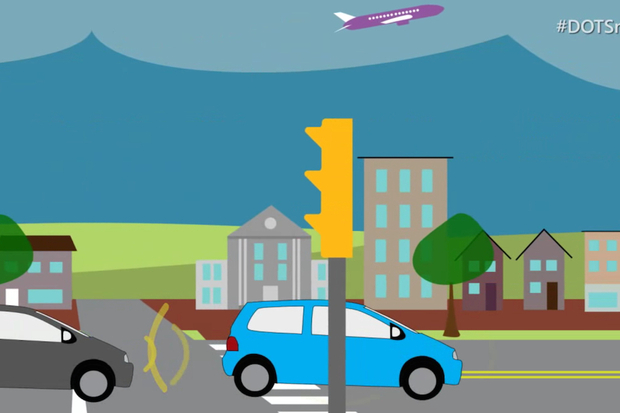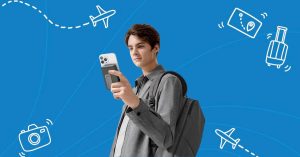Columbus, Ohio focuses $40M DOT prize on transportation tech


Columbus, Ohio recently snagged a $40 million prizefrom the U.S. Department of Transportation (DOT) for a series of proposals to use data and technology to reshape the city’s transportation system.
The city of 850,000 beat out six other finalists in the DOT’s Smart City Challenge; the money will be matched by $10 million from Paul Allen’s Vulcan Inc. and $90 million the city raised from private partners. In all, 78 cities applied for the grant, including nearly all of the nation’s mid-sized cities.
A directive of the DOT challenge was for each city to think about transportation as cross-functional, working in an ecosystem that focuses on safety and efficiency but also on using advanced tools to improve lives — especially those in underserved neighborhoods.
Columbus latched onto that focus to help underserved neighborhoods and named its older Linden neighborhood as a prime recipient. The city and its partners plan to pilot smart transportation tech, including autonomous shuttles. They would be used to help working Linden residents reach city buses from the their homes and then from the bus stops to their jobs.
Linden, a neighborhood in northeastern Columbus, is about six square miles and bounded on three sides by railroad tracks. About 30,000 residents live in about 13,000 homes, according to recent census data.
“Columbus overall is doing well…but Linden is one our biggest challenges, ” Columbus Mayor Andrew Ginther said in an interview. While the city is growing quickly and has an AAA bond rating with the lowest unemployment rate in 25 years, Linden has high infant mortality, high unemployment and a low high school graduation rate, he said.
One challenge of creating an autonomous shuttle for Linden residents, he said, will be finding a way to load cash onto a smart transit card, since few Linden residents have a credit or debit card to load onto a phone to order an Uber or Lyft shuttle. “They need a shuttle to get to the [buses] or to the front door of their job, child care or an institution of higher learning,” Ginther said. Many Linden residents have a cell phone, if not a smartphone.
“This is about how we leverage what we have in research and development of a sustainable transportation system, particularly connecting the disconnected and the neighborhoods that don’t have easy or little access to jobs, higher ed and affordable child care,” Ginther added. “Linden is called a food desert and a healthcare desert because they don’t have access to fresh fruits and eggs and doctors.”
While Linden is a relatively small older neighborhood in Columbus, the lessons learned there over the next four years will benefit similar neighborhoods in other cities, he predicted. “This is a laboratory for cities across the country…to share resources and connect.”
One way the mayor will judge the success of the efforts in Linden is whether median income grows, he said. The median income is now $12,000 below that of residents in the surrounding county.
Columbus will tap into the expertise of its largest employers, such as Honda, America Electric Power and IBM, and transportation researchers at Ohio State University (OSU) and Battelle Memorial Institute in setting up new technologies.
In addition to autonomous shuttles, plans for the DOT grant include charging stations for electric vehicles, broadband to support traveler information kiosks, development of real-time traffic and parking apps, and creation of a single pass or smartphone app to pay for all transportation modes.
One particular new bus-related technology that is being tested in New York City and elsewhere could help Columbus, said Carla Bailo, assistant vice president of mobility research and business development at OSU. That “mobile eye” concept would provide technology to track the GPS location of buses to be coordinated with traffic lights on bus corridors, letting the green light shine longer to let a bus pass, for example.
“Right now, our buses are our only rapid transit service and the buses take a long time to get anywhere since there are no straight routes,” Bailo said. “The purpose would be to get the jobs downtown. The mobile eye would tell a smart signal where the bus is” to help cut commute times.
Apps may also be designed to give transportation users choices. “The app could say this is the most healthy route, this is the cheapest, the fastest, or produces the least carbon footprint,” she said. “People won’t get out of their single-occupant cars unless it is as simple to use a mobility service as it is to use their own car. We have to provide options.”
As in many cities, the challenge of reducing single-occupant cars on busy streets reigns supreme. Columbus has the distinction of being one of the largest U.S. cities without a light or heavy commuter rail or subway system.
Right now, that’s not a big problem, since Columbus is often listed among the top cities in the nation for easy commutes, the mayor said. But down the road, the need for transit improvements will increase.
“The city is going to grow by up to 1 million more people by 2030 and we will have a crisis by then if we haven’t figured out how to move people in a safe and reliable way,” Ginther said. Winning the DOT grant and setting up pilots of autonomous shuttles that can carry several people on a trip “helps set the stage for the larger conversation” on whether the city wants mass transit.
Ginther believes the shuttles could be provided as a public-private partnership. Many legal and ethical decisions will have to be made about liability if collision-avoidance technology were to fail, Bailo added. Before her job at OSU, Bailo spent 25 years at Nissan helping lead product development.
“Autonomous vehicles are coming sooner than people thought two years ago,” Ginther said. “We’re already looking at how they impact business. Autonomous vehicles, bike sharing, car sharing, Uber and Lyft are all going to be part of the solution.”










